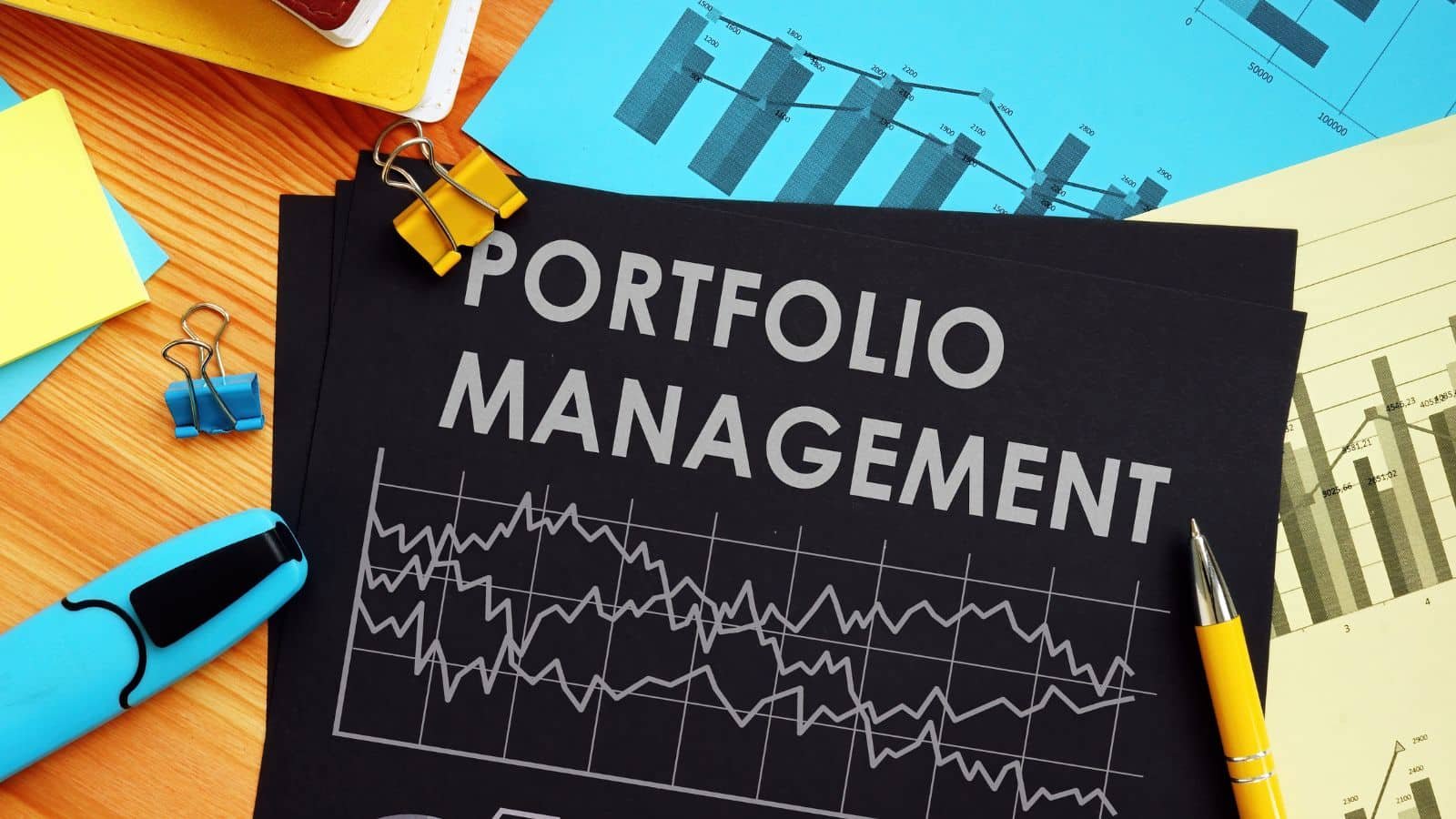Building a diversified portfolio with international equities and bonds
Many investors wonder if it’s wise to only focus on stocks and bonds from their home country. Or should they look at international markets too?
Some believe local investments are safer and easier to predict. Others say dipping into global markets can be very rewarding. So, which path leads to the best returns while managing risk?
This article will show you how to create a strong investment mix. We’ll talk about why spreading your investments out is good, the power of picking your assets wisely, and how to create a solid mix in your portfolio. You’ll learn how investing in other countries can improve your portfolio and whether you should do it.
Key Takeaways:
- Building a diversified portfolio is crucial for managing risk and optimizing returns.
- International equities and bonds provide opportunities for diversification and exposure to different markets.
- Asset allocation is key to achieving long-term investment success.
- Consider diversifying within each asset class to further mitigate risk.
- Regular check-ups and rebalancing are essential to maintaining a diversified portfolio.
The importance of diversification
Diversification is key for a strong investment plan. It helps manage risks and choose assets wisely for growth and safety.
Investors can lower risk by putting money in different stocks and bonds. If one investment does badly, others might do well enough to balance it out. This helps handle market ups and downs, especially in uncertain times.
Diversification can also boost how much money you make. It lets you choose assets from different parts of the economy. So, you can make money in various ways while trying to avoid big losses.
“Diversification is a cornerstone of a well-rounded investment strategy. It provides the foundation for long-term portfolio growth and stability.” – Investment Expert
It’s also about picking the right mix of stocks and bonds based on what you can handle, your goals, and how long you plan to invest. Changing this mix to fit your needs helps keep your investments in line with what you’re aiming for.
Also, it’s wise to spread your money in each type of asset. For stocks, it’s smart to not just buy from one area or size. This stops your money from being too tied to one company or industry, making your investments more balanced.
In the bond world, spreading your money in various bonds reduces the risk to changes in interest rates and financial health. This way, you’re not as affected if these things fluctuate.
Seeing diversification as a long game is important. It won’t always bring big wins right away, but it’s a great way to steady your returns over time. With a well-diversified portfolio, you might see fewer losses when the market slows down.
Why Diversification Matters
Diversifying has many benefits:
- It lowers risk from single investments.
- You can make money in many ways.
- Your investments can match what you want and can handle.
- It keeps you safe from putting all your money in one place.
By adding diversification to your plan, you stand a better chance at success over a long stretch. It’s all about handling risk the right way.
| Risk Management | Investment Strategy | Asset Allocation | |
|---|---|---|---|
| Definition | Spotting and fixing risks in your investment pile. | A set of moves to get to investment goals. | Spreading your money in different assets based on how much risk you can take. |
| Importance | It’s key for losing less and avoiding market swings. | It guides how to invest and aims to bring more back. | Helps balance risk and reward well. |
| Key Components | Risk checks, spreading money, and adjusting often. | Picking assets, making a plan, and thinking ahead. | Choosing the right mix, keeping it balanced, and risk control. |
Building a diversified equity portfolio
When making an equity portfolio for diversification, avoid putting too much in one stock. Experts suggest limiting each stock to 5% of your total. This lowers the risk from any one stock losing value.
Diversification means more than just holding different stocks. It’s smart to mix stocks of various sizes, from different industries and parts of the world. By doing so, your investments are less likely to be harmed by problems in a single market area. This way, you can grow your money and lower the risk of losing it.
Diversification is the only free lunch in finance. It is the one thing that you get for free that is well-proven to reduce volatility and improve the risk-adjusted returns of your portfolio. — Marc De Freitas, Director, Equity Strategies at Altis Partners
Include both growth and value stocks for a well-rounded equity portfolio. Growth stocks can gain a lot in value and come from fast-expanding sectors. Value stocks, on the other hand, have stable prices and might pay out good dividends.
Mixing growth and value stocks helps you spread risk and aims for success in the stock market in the long term.
Example of a well-diversified equity portfolio:
| Company Name | Market Capitalization | Sector | Region |
|---|---|---|---|
| Apple Inc. | Large Cap | Technology | United States |
| Johnson & Johnson | Large Cap | Healthcare | United States |
| Nestlé SA | Large Cap | Consumer Goods | Switzerland |
| Toyota Motor Corporation | Large Cap | Automotive | Japan |
| Amazon.com Inc. | Large Cap | Retail | United States |
| Visa Inc. | Large Cap | Financial Services | United States |
| Berkshire Hathaway Inc. | Large Cap | Financial Conglomerate | United States |
In the example above, a diverse equity portfolio is seen. It has companies of various sizes, industries, and countries. Such a mix protects your investments from problems in just one spot of the global market. You can enjoy growth, stability, and a chance to earn dividends by choosing large-cap companies this way.
Diversifying bond investments
Creating a mix of assets is key for a strong investment plan. Besides stocks, adding bonds can make your portfolio safer and bring in steady profits.
The bond market has a lot to offer for growth and risk management. Including various bonds, from governments to companies, helps spread risk. This way, you can make your investment in bonds more secure.
Benefits of bond diversification
Looking at different bond types cuts down risks from changes in rates and values. It’s a smart move when you think about how bond prices react to rising rates. Diversification can soften the blow of these changes on your earnings.
Each bond category has its own strengths. Governments offer high safety, but maybe lower profits. Companies might pay more but carry more risk. Municipalities can give tax breaks to some investors in certain places.
Using all these types in your mix lets you tap into a range of opportunities. You can benefit when various parts of the bond market do well.
Example of a diversified bond portfolio
| Bond Type | Maturity | Yield | Credit Rating |
|---|---|---|---|
| US Treasury Bonds | 10 years | 1.5% | AAA |
| Corporate Bonds | 5 years | 3.0% | A |
| Municipal Bonds | 15 years | 2.5% | AA |
This table shows a well-mixed bond portfolio. It has various bonds to cover different risks. By diversifying like this, you make your investments safer.
“Building a diversified bond portfolio is crucial for managing risk and optimizing returns. Including different types of bonds can help reduce sensitivity to interest-rate changes and provide stability to your overall investment strategy.” – Investment Expert
Mixing up your bond investments makes your overall investment safer and more profitable. Talk to a financial expert or do some research to find the best bond mix for you. This step is crucial for meeting your investing and risk goals.
The long-term value of diversification
Diversification enhances how well a portfolio performs and lowers risk. It’s about investing in various asset classes, sectors, and regions. This way, the impact of market ups and downs is smaller. It’s a smart way to manage risk over time.
A well-diversified portfolio did better in the 2008–2009 bear market than an all-stock one. Though diversification doesn’t win every time, it softens losses and captures gains. This balanced strategy proves its worth in volatile markets.
Diversifying can also boost returns. It’s about using different assets to balance risks and rewards. This makes the portfolio more steady and able to bounce back from hits.
“Diversification is the only free lunch in finance.” – Harry Markowitz, Nobel Laureate in Economics
Relying solely on stocks or bonds can be risky. If that market drops, so does the portfolio. Diversification spreads the risk. So, bad performance in one area might be offset by another’s success.
Also, diversification cuts down on the effect of individual stock risks. With many investments, the impact of a single bad performance lessens. This makes the overall portfolio safer.
The real value of diversification is its role in performance and risk management. A varied portfolio reduces risk and aims for steady growth. It’s the key to long-lasting financial well-being.
Illustrative Example of Diversification’s Value:
| Year | All-Stock Portfolio (%) | Diversified Portfolio (%) |
|---|---|---|
| 2008 | -37% | -19% |
| 2009 | 26% | 12% |
| 2010 | 15% | 16% |
| 2011 | -5% | 2% |
| 2012 | 8% | 10% |
From 2008 to 2012, a diversified portfolio outperformed an all-stock one. It suffered less in the 2008 crash and came back stronger. This example shows diversification’s real benefits.
Understanding diversification’s value lets investors create strong portfolios. These are flexible, less risky, and can bring steady returns over time.
Rebalancing for optimal diversification
Rebalancing is key to a well-diversified investment portfolio. It means keeping a check on your investments and adjusting them as needed. This ensures your money is in line with what you’re comfortable with and your future goals.
Choosing where to put your money influences how risky or safe your investments are. If you don’t fix your investment mix regularly, it might start to change on its own. This could make you face more risk than you planned for, or might not bring in as much money.
Why is rebalancing important?
Trying to guess what the market will do next is hard and often leads to bad choices. But by rebalancing regularly, you avoid getting caught up in short-term trends. Instead, you stick to your well-thought-out plan for the long run.
It also helps make sure you’re not taking on too much risk. Because some investments might start to do better than others, your balance could start to look different. Rebalancing your investments keeps everything in check. This way, you’re ready for changes without losing your sleep over it.
When and how often should you rebalance?
Deciding when to rebalance relies on what makes you comfortable. Many experts say doing it once a year is a good idea. But if your financial life goes through big shifts, there might be times when jumping in sooner is smart.
One way to rebalance is to sell some of what’s done well and buy more of what’s lagging. This strategy is all about making smart moves to better your future chances. Or, managing your future investments to steer your money in the right direction over time.
Finding the right rhythm for rebalancing is about staying true to your investment plan. It keeps you on track with your long-term goals. By regularly checking and tweaking your funds, you ensure they continue to support what you’re aiming for.
Rebalancing your investments offers a way to reduce risk and avoid common pitfalls like trying to beat the market. It’s a strategy that sets you up for success in the long haul.
Tips for diversifying your portfolio
There are many strategies to diversify your investments. Spreading your money across different areas lessens the risk. It protects your investments from sudden market changes. This way, you can aim for steady growth over time.
One strategy is to look at index funds. These funds follow market indexes like the S&P 500. They ensure you have a wide range of investments in one go. Plus, they often have lower fees than other managed funds.
Adding bond funds to your mix also helps. They include various types, like government and corporate bonds. Bonds bring more safety and a steady income to balance the stock market’s ups and downs.
Good habits matter, too. Putting in the same money regularly is a smart move, no matter the market’s ups and downs. And checking your investments often makes sure they fit your goals and comfort with risk.
“Diversification is the only free lunch in investing.” – Harry Markowitz
Always keep an eye on your diversification. Regular checks help make sure your portfolio’s mix is still the best for you. Following these steps will lead to a portfolio that makes the most of opportunities while managing risk.
Diversification Strategies
Consider these diversification strategies:
- Put money in different types of assets: stocks, bonds, and more.
- Invest in various index funds to cover different markets.
- Include bond funds for a safer and more stable mix.
- Keep investing the same amount regularly, no matter market conditions.
- Review your portfolio often to make sure it meets your goals.
| Asset Class | Index Funds | Bond Funds |
|---|---|---|
| Stocks | S&P 500 Index Fund | Corporate Bond Fund |
| Bonds | Bloomberg Barclays U.S. Aggregate Bond Index Fund | Municipal Bond Fund |
| Alternatives | MSCI World Real Estate Index Fund | High-Yield Bond Fund |
Using these methods will help you build a strong mix of investments. It sets you up for success in the long run.

The role of cash and commodities in diversification
Diversification is key for investors who want to lessen risk. It’s about spreading money across different types of assets. This includes stocks, bonds, and other options like cash and commodities.
Cash is more important in diversification than we might think. It keeps its value and helps with short-term needs. Including cash in an investment mix lets you grab chances when markets are down. It also acts as a safety net against market swings.
Commodities, such as gold, oil, and farm goods, add another layer of diversification. They often move differently from stocks and bonds.
For instance, when the economy sours, gold can protect against weak currencies or rising prices. Putting commodities in your mix might cut risk and boost your gains.
But remember, commodities can swing in value and their performance can be hard to predict. So, using them wisely in your investments is essential.
Having cash and commodities in your portfolio can make it safer and even grow. Cash keeps you ready and stable, while commodities guard against inflation and unknowns. This mix lets investors deal with market changes and meets their financial dreams.
“Diversification means more than just stocks and bonds. It’s about adding cash and commodities to make your investments stronger.” – John Smith, Financial Advisor
Benefits of including cash and commodities in a diversified portfolio:
- Cash is a steady backup and offers quick access to money.
- Commodities can protect against price hikes and provide varied growth.
- Both cash and commodities make your investment mix tougher and more flexible.
Using cash and commodities wisely is key to a strong investment plan. It’s important to think about how your choices fit your goals. A talk with a financial pro can make sure you get the most out of diversification and manage risks.
Conclusion
It’s key to mix international stocks and bonds in your investment portfolio. This mix lowers risk and boosts returns. Spread your portfolio across various assets, sectors, and places to cut overall risk and do better over time. Always keep an eye on your portfolio to keep this mix in line with your goals.
When you spread your money out, you balance risk and what you might gain. Investing in different things, like stocks and bonds, means you won’t lose everything in one spot. This method lets investors earn more with a risk level they’re comfortable with.
So, having a varied portfolio is vital for wise investing. It lessens the harm of a bad investment and helps meet long-term financial targets. Keeping your investments well-diversified and up to date with the market can make your investing journey smoother and more successful.







